Python high-order function usage summary!
Click **Machine Learning Algorithms and Python Learning, **Select Star
Wonderful content don’t get lost

Datawhale dry goods, author: Paper money super, Xiamen University
This article explains in detail the use of the 5 built-in higher-order functions of Python combined with various practical examples, which can help understand the data structure of Python and improve the efficiency of data processing. The 5 functions are:
- map
- reduce
- filter
- sorted/sort
- zip
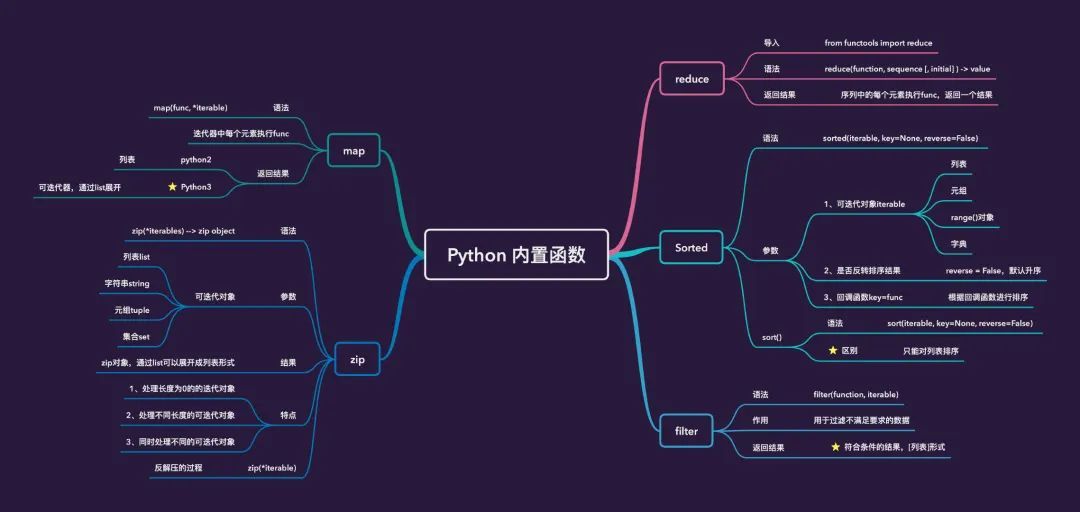
One, map
1.1 Syntax
The basic syntax of map function is map(func, seq), and its meaning means: execute the function of the previous function func for each element in the iterable sequence, and finally obtain a new sequence. note:
Python2directly returns a listWhat is returned in Python3is an iterator, If you want to return a list, you can use list() to process
help(map) #View help information
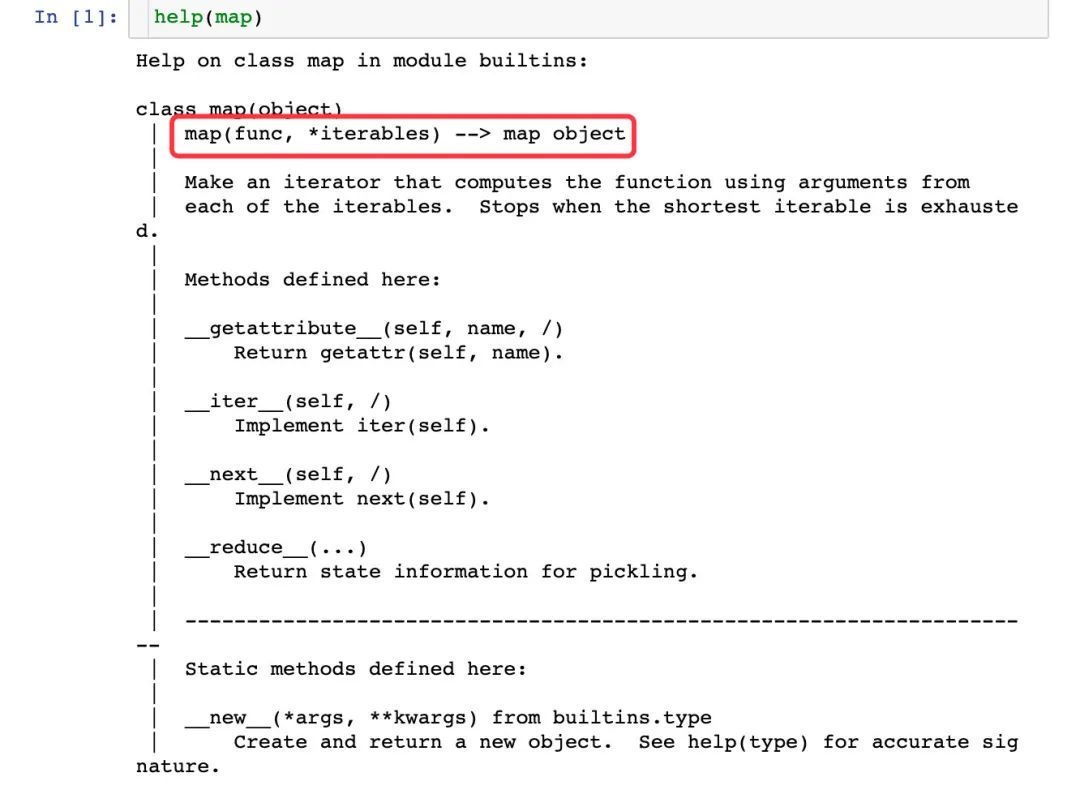
1.2 demo
Illustrate how to use the map function with examples
- Use Python built-in functions
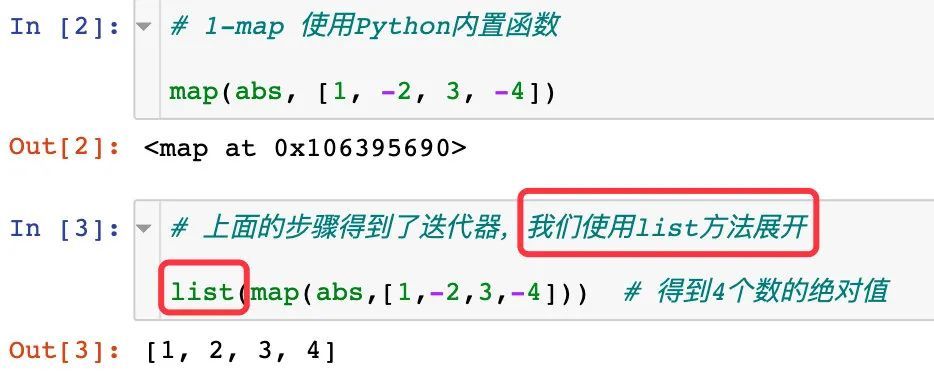
- Use custom functions
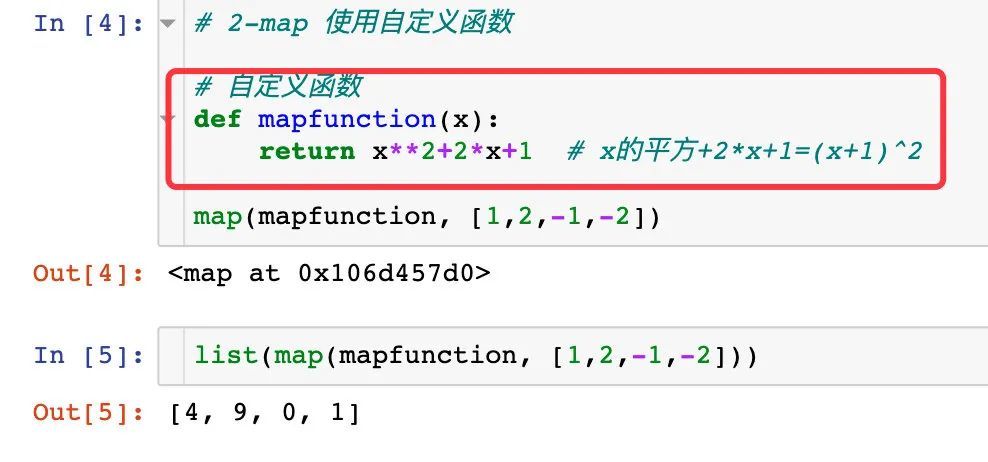
- Use anonymous function lambda
There can be multiple parameters when using anonymous functions
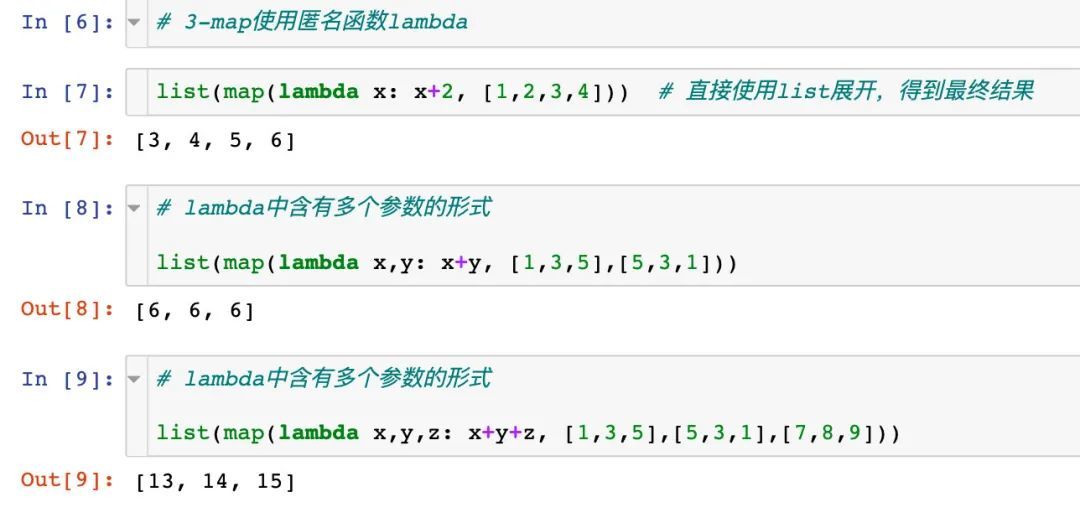
Two, reduce
2.1 Syntax
Definition of reduce function:
reduce(function, sequence [, initial])-> value
reduce takes an element from sequence in turn, and uses the result of the last call to function as a parameter, and calls function again.
"When calling a function for the first time, if the initial parameter is provided, the function will be called with the first element in the sequence and initial as the parameters, otherwise it will be called with the first number of the sequence
”
**2.2 Use **
In Python3, the reduce function has been moved to the functools module, and it needs to be imported first:
from functools import reduce #Import
help(reduce) #View help documentation
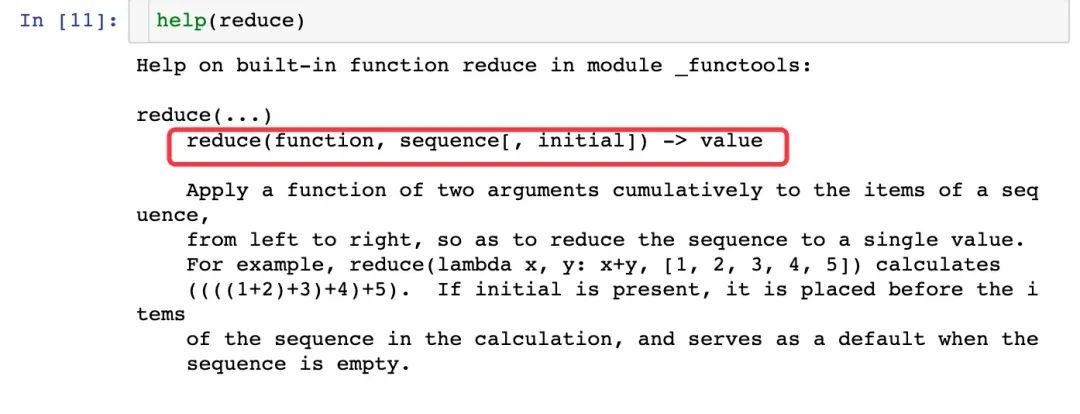
In the above example, we use a graphic to explain:
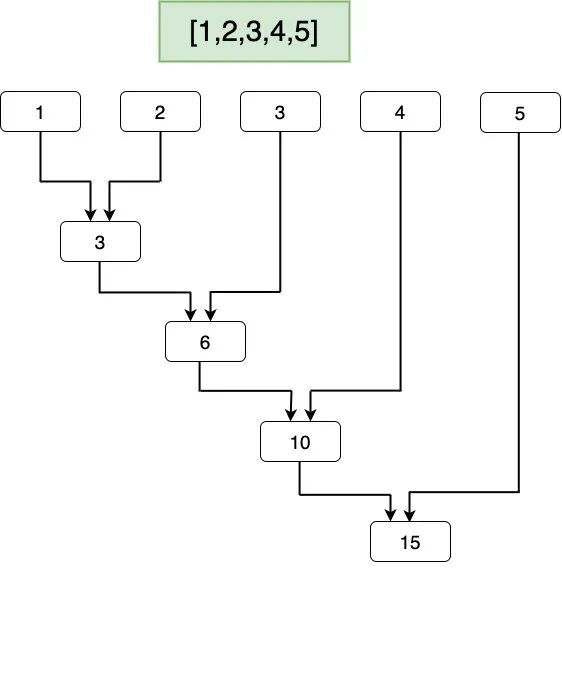
2.3 demo
- Use custom functions

- Use anonymous function lambda
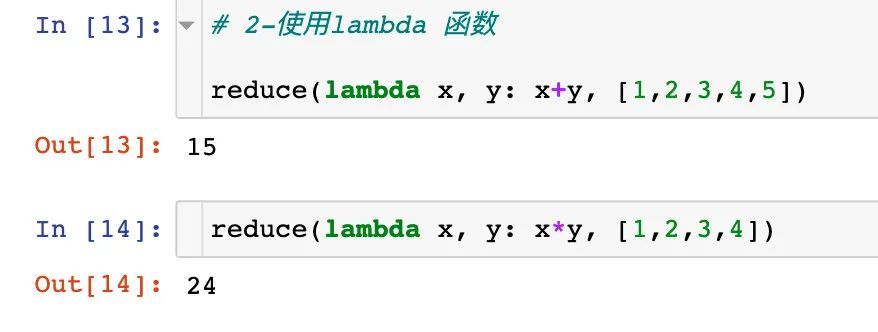
image-20201024185550970
- A complex example

The specific process is:
1.1*2+1=32.3*3+1=10 # The first 3 is the result 3 above, and the second is 33 in the original data.10*4+1=41
- Example with initial value
The initial value and the first value in the sequence execute the func function, and the result will be the next starting value

# The specific process is explained as
1.6+1=72.7+2=93.9+3=124.12+4=165.16+5=21
Three, filter
3.1 Syntax
The filter() function is used to filter the sequence, filter out those elements that do not meet the conditions, and return the elements that meet the conditions to form a new list.
Each element in the sequence is passed as a parameter to the function for judgment, returns True or False, and finally the element that returns True is placed in the new list.
filter() syntax is as follows:
filter(function, iterable) #The former is a function, the latter is a sequence to be executed
3.2 demo
help(filter) #Help document
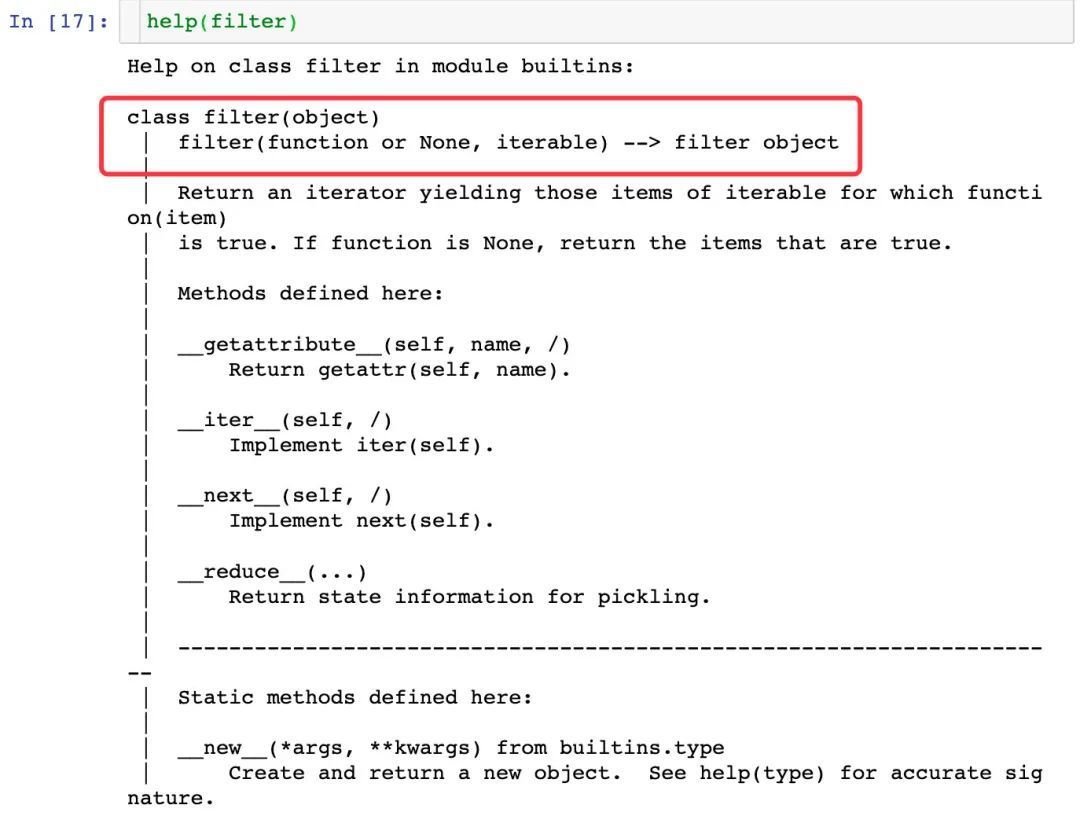
- Use custom functions
Return even numbers within 10

- Use anonymous function lambda
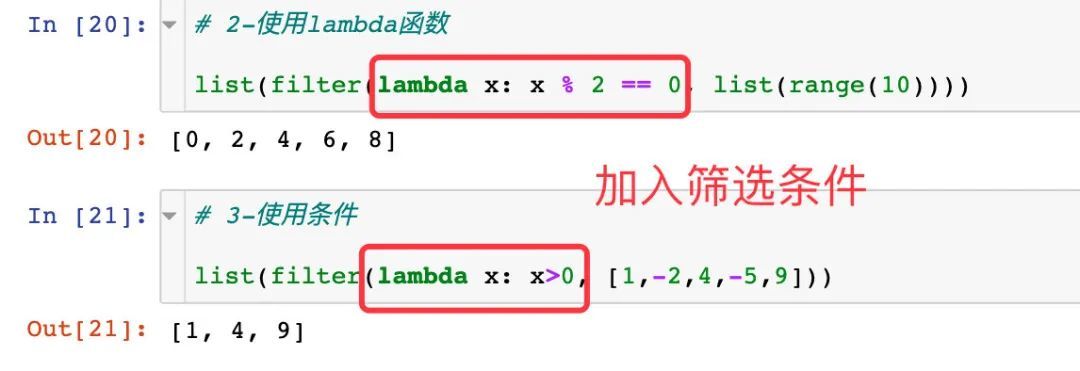
- Filtering of strings
Select a string that meets the specified requirements

Four, sorted
4.1 Syntax
sorted(iterable, key=None, reverse=False)
4.2 3 Parameters
sorted() accepts 3 parameters, returns a sorted list
- Iterable object
iterable reverse=False, accept a Boolean value, choose whether to reverse the sorting result, the default isFalse- Accept a callback function
key=None, the callback function can only have one parameter, sorted according to the return value of the function
4.3 demo
help(sorted) #Help document

- Not inverted by default
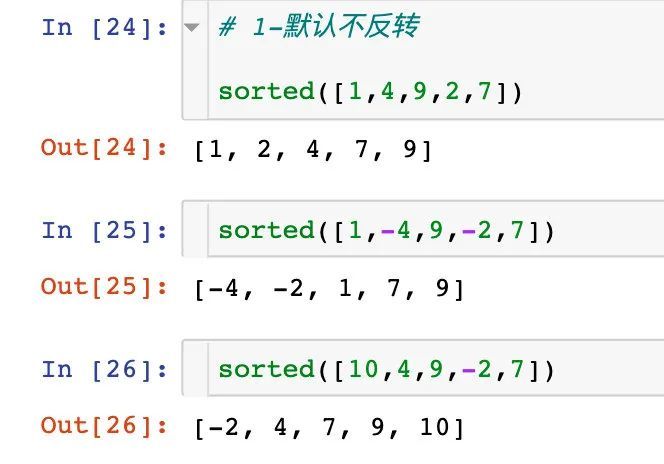
- Sorting tuples, range objects, dictionaries
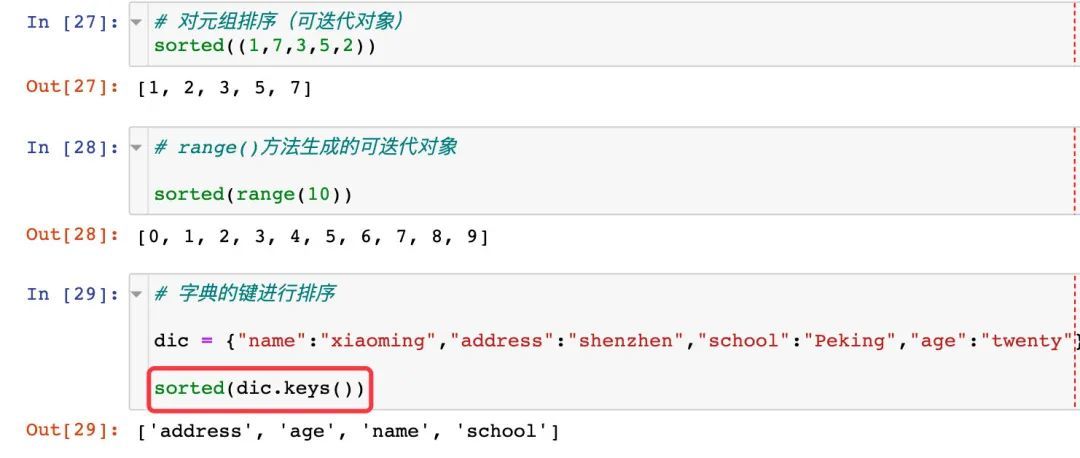
4.4 Result reversed
The meaning of result reversal is sort the results in descending order, because the original default is ascending order, and reverse=True is used.

4.5 Understanding key
The function of the key parameter is that we customize a function, and then sort by applying the elements in the sequence to the function
Here we use absolute value function
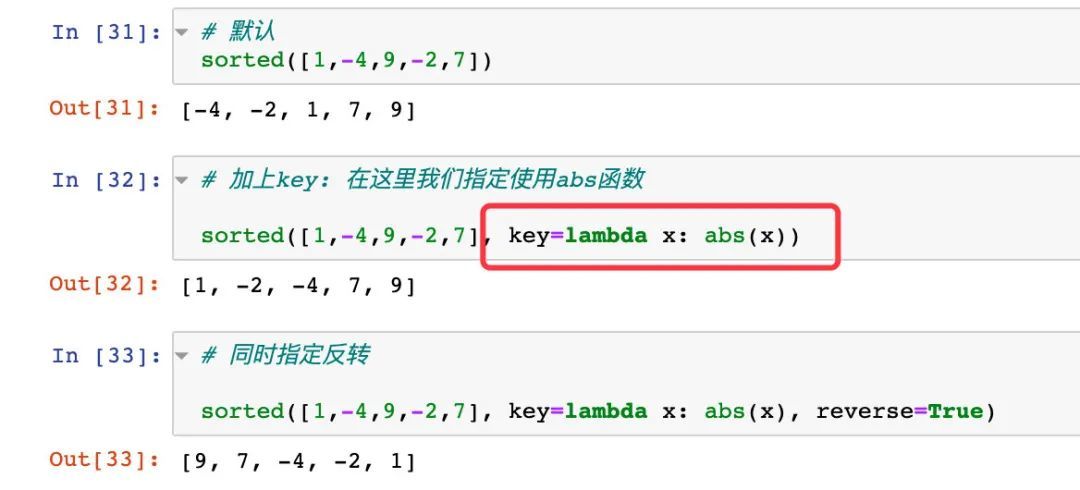
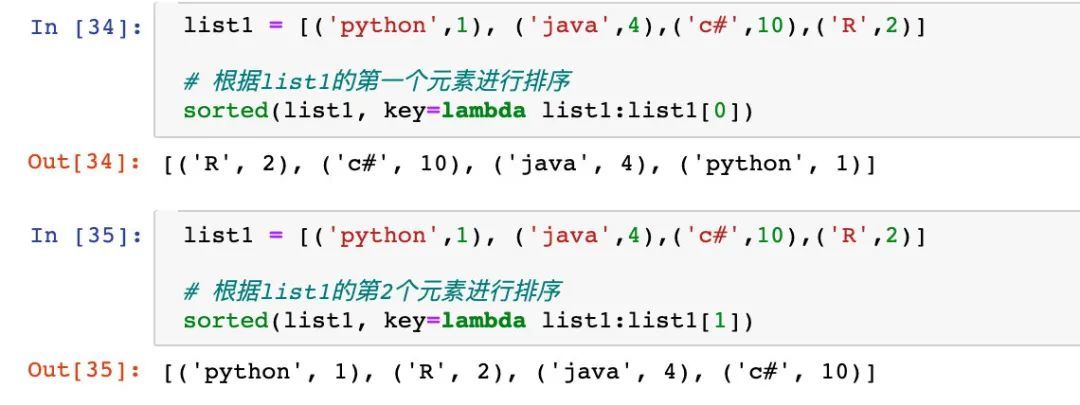
4.6 Contrast sort()
The sort() method can only sort the original list, and the parameters are the same as sorted
The result is that the original list is directly modified in place, while sorted is to generate a new list, the two are different
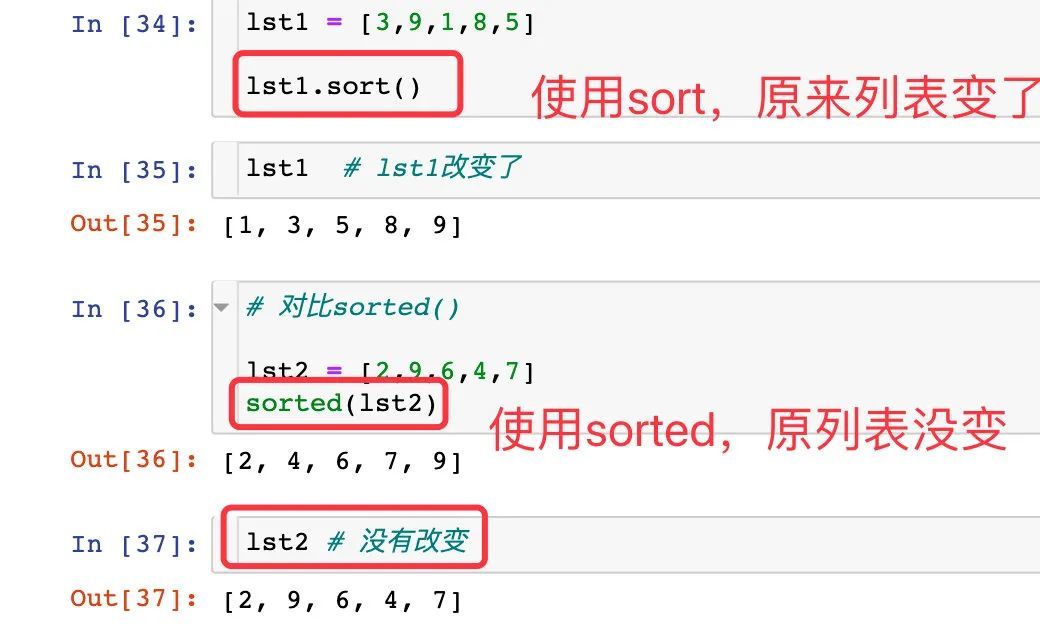
Five, zip
zip() is a very important method in Python, which can quickly implement many functions.
5.1 Syntax
zip([iterable,...]) #iterable is one or more iterators
- The result of function execution is a zip object returned in Python3. If you need to display it in the form of a list, use the list method to expand directly; The expanded result is in the form of nested tuples in the list
- What is returned directly in Python2 is in the form of
tuple list
help(zip) #View document
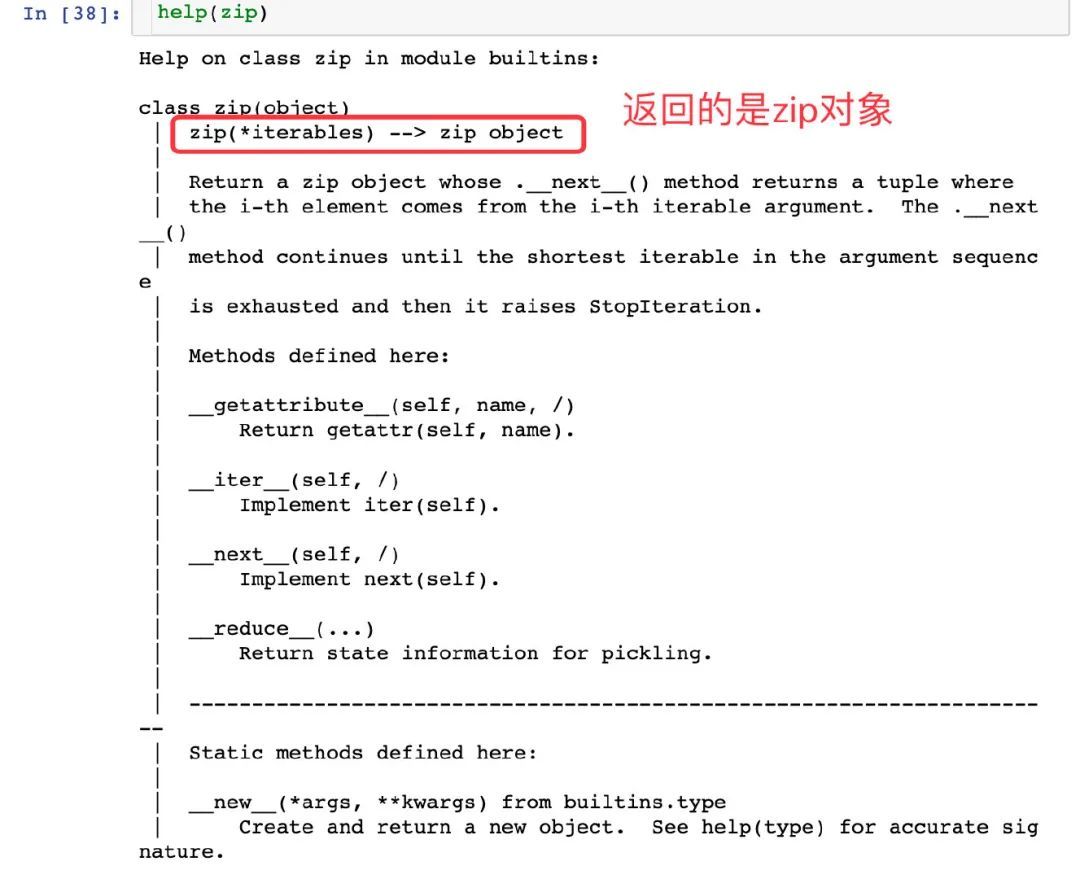
5.2 zip accepts a sequence
zip can accept lists, tuples, strings and other forms
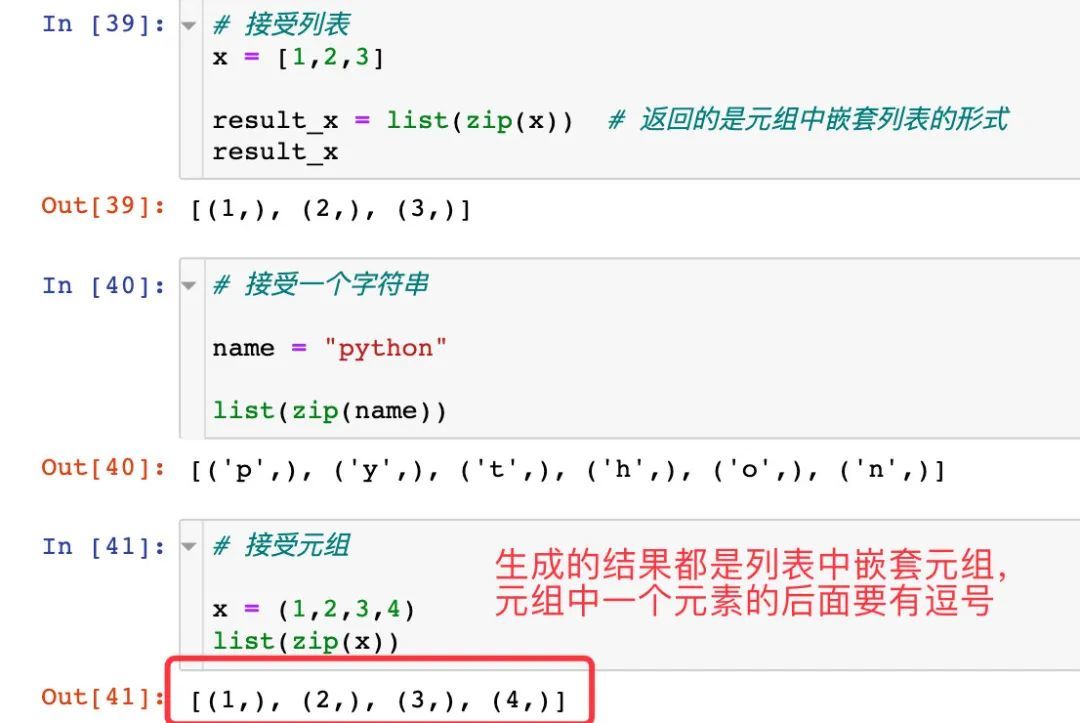
zip accepts the form of an empty list, and the returned list is still empty
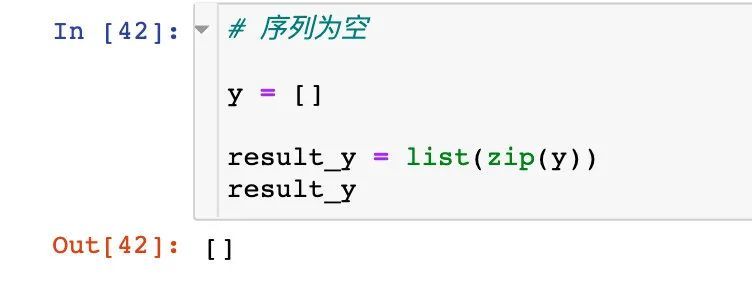
5.3 zip accepts multiple sequences
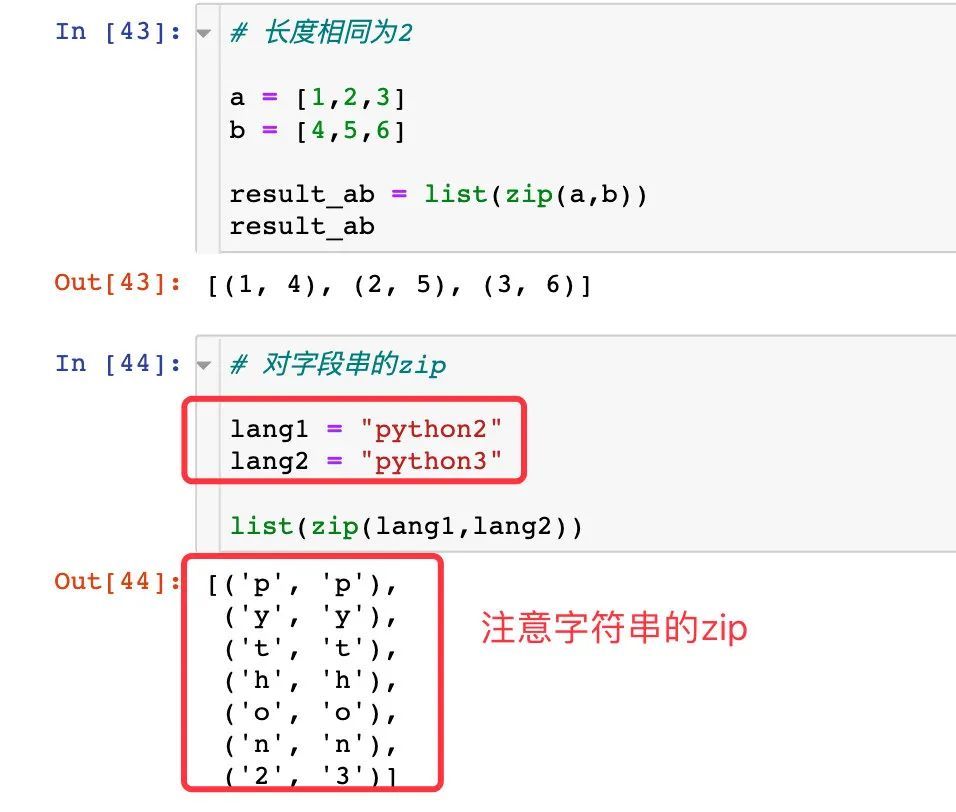
Simultaneously merge different types of sequences
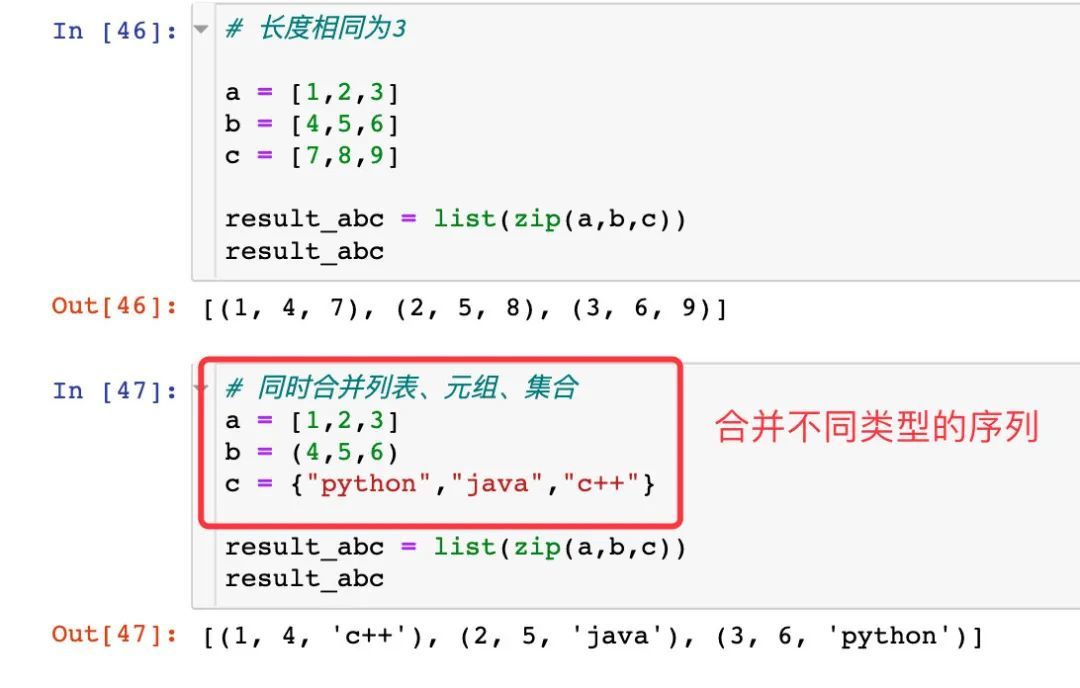
5.4 Different processing length
When multiple sequences exist at the same time, take the length of the smallest sequence
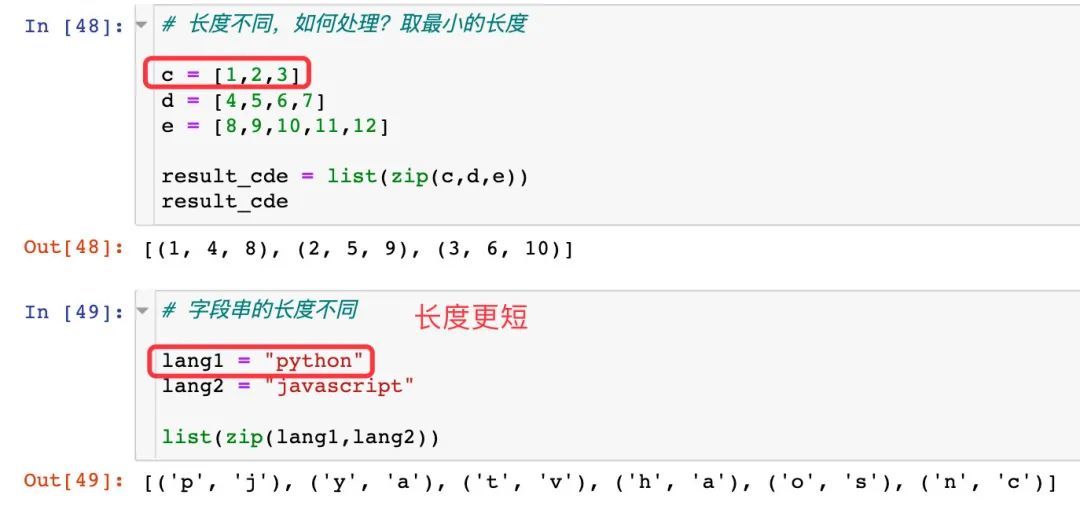
*5.5 zip(iterables)
We generally think that this method is the inverse process of zip, it is a process of unzip, for example to illustrate its use:
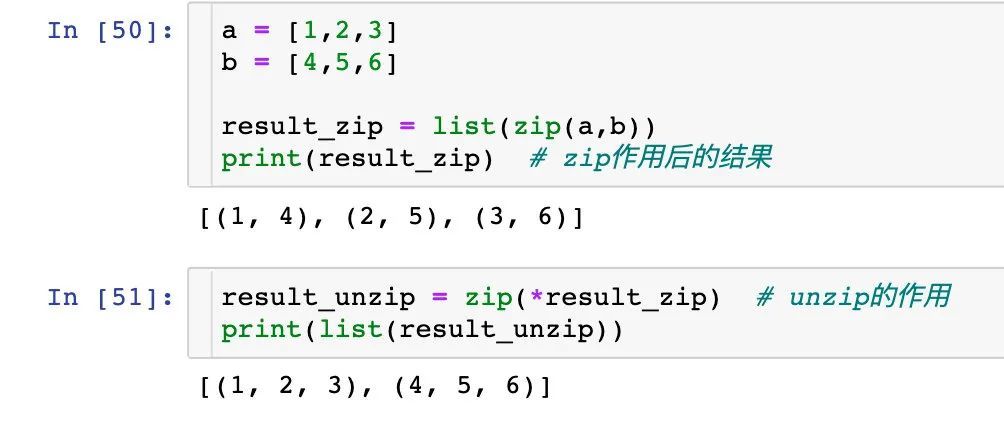
5.6 Complex example
Let’s look at a more complex example

The explanation of this example is:
[ x]is a list containing lists,xitself is a list[ x]*3The result is[x,x,x], which is actually[[4,5,6],[4,5,6],[4,5,6]][*[ x]*3]The result is[(4,4,4),(5,5,5),(6,6,6)]
5.7 zip usage
The following is a practical example of zip to illustrate its application:
- List sum
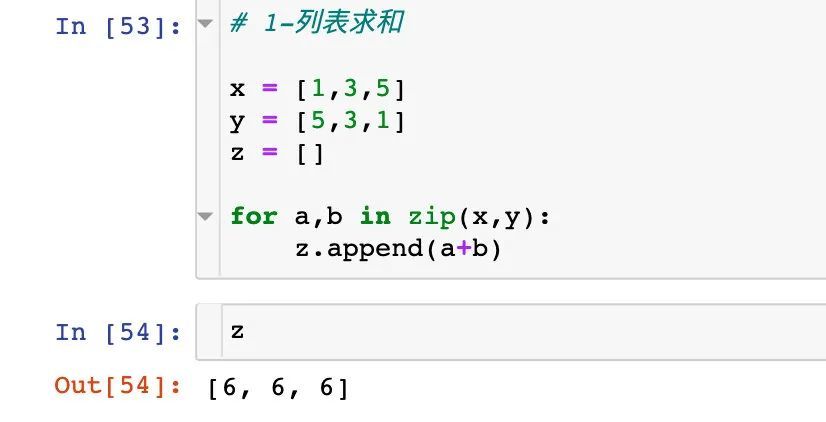
- Data consolidation
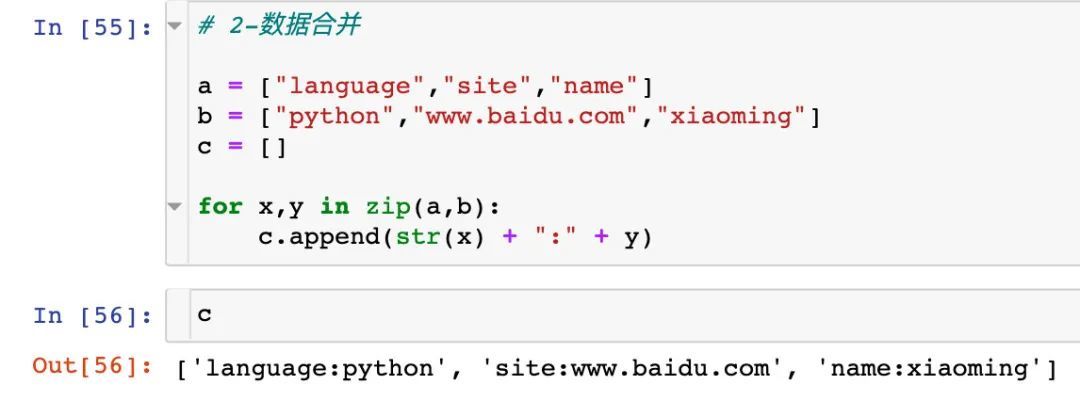
- Dictionary key-value conversion
For loop implementation:

Use zip to achieve:
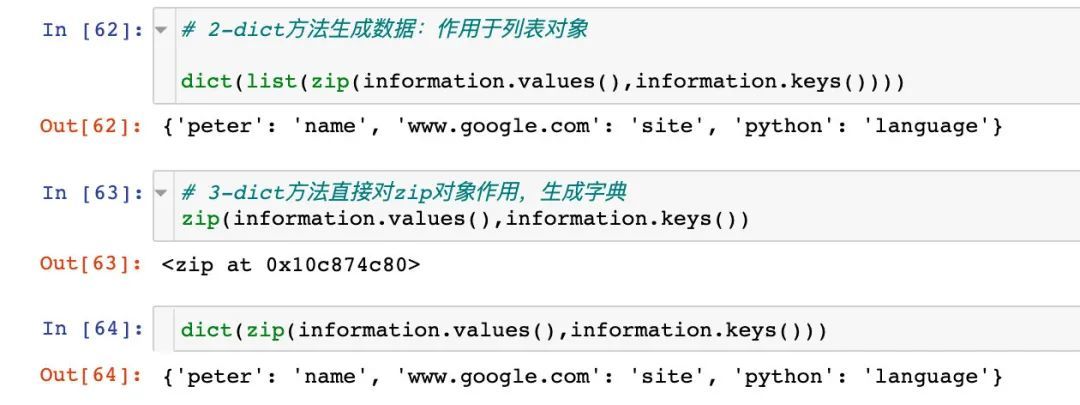
**Click "Looking" if you like it! **
Recommended Posts